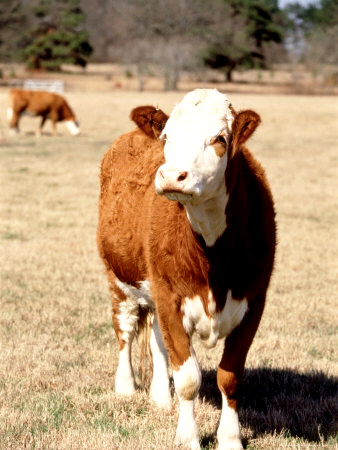From www.beefmagazine.com
Is now the time to sell cows or buy them? That’s the basic question often posed at the beginning of each year to Darrell Mark, University of Nebraska agricultural economist.
Answering yes to either question currently could make economic sense, Mark says.
There are fewer beef cows in the national herd than at any time in 50 years. Beef cow slaughter rates and beef heifer retention rates suggest expansion will be delayed at least another year.
“After two consecutive years of high beef cow slaughter and deep culling into herds, fewer good running-age cows are available to be sold as bred stock,” Mark explains. “Additionally, current demand for cows may be strong because ranchers have culled the most unproductive cows in their herd and are seeking replacements. Ranchers in areas like the Nebraska Sand Hills, the Kansas Flint Hills and Montana that had adequate moisture for forage production may have the ability to increase herd size.”
Mark credits the historically small calf crop produced the last two years and expectations for improved fed-cattle prices in 2010 for the price strength shown this fall in the bred-heifer and cow markets.
According to USDA’s most recent “World Agricultural Supply and Demand Estimates,” fed-cattle prices for 2010 are projected to average $4/cwt. more than last year. If USDA’s surprise year-end estimate of a record corn crop is close to reality — a big question mark given the number of acres yet to be harvested — there should be more corn than anticipated. Higher ending stocks should help dilute price volatility and blunt the impact on calf prices.
On the other hand, prospects for a global economic recovery continue to be murkier than a dipping vat at the end of the day.
The nation’s unemployment rate remains at 10%, the highest since the early 1980s and only the second time it has been that high since the 1940s.
Sluggish job recovery and increasing costs for commodities such as crude oil could hamstring recovery and help propel the double-dip recession that some fear. If the feds decide to boost the allowable percentage of ethanol beyond 10%, any corn cushion, if it does exist, could quickly evaporate.
True U.S. consumer beef demand — not just supply-related consumption — is declining. Prospects for boosting beef exports anytime soon remain iffy.
All told, Mark explains, “It appears like this would be a good year to sell cows if you were planning to liquidate your herd due to retirement or lifestyle changes or a desire to reduce risk exposure. Cow prices are not likely to drop substantially by next year because supplies will remain tight, but it will depend on what materializes in the fed-cattle and calf markets, which will be defined by beef demand and general economic conditions.”
Conversely, if Mother Nature isn’t forcing your hand either way, Mark explains buying cows at this stage could be profitable, depending on forage availability and cow carrying costs.
In Nebraska, for instance, he explains the price for 500- to 600-lb. steer calves next fall is projected at $115-$130/cwt. He adds the potential exists for higher prices in future years if beef demand improves.
“This suggests possible revenue of about $600/head after adjusting for weaning rates and split steer/heifer calf sales. Annual cow ownership costs may be about $90/head, figuring $1,200/head for the bred cow and selling it for a cull value of $560/head in seven years,” Mark explains. He says non-ownership cash costs for maintaining the cow in the herd for one year (basis the average Nebraska operation) is $500-550/head/year.
So, the potential is there to expand. But, Mark cautions the margin prospects are snug enough to erode into breakeven or loss territory if feed costs increase.

